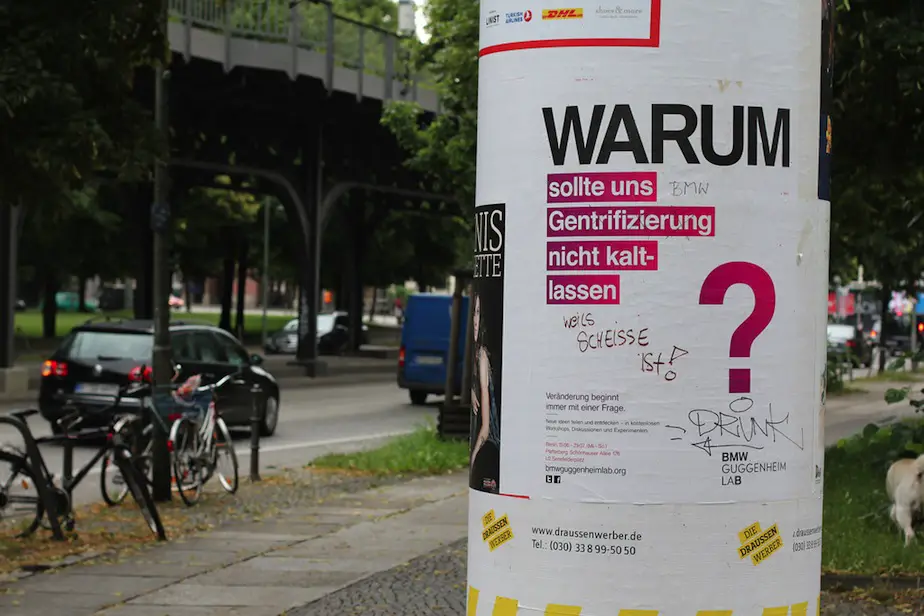London is regenerating, or so it appears to be as building cranes and cement trucks plague North and South of the Thames. From a bird’s eye view of the city, one can glimpse at the ambitious master plans sprawling all around such as in Battersea, Bermondsey and Stratford, despite a bleak economic output and the recent less than encouraging economic figures. On the other hand, there are projects which are more modest, and whose approach is directed to its local community rather than to the international investment-savvy real estate speculators. Such is the case of Windrush Square in Brixton.
Windrush Square in Brixton is an emblematic development in London given that this Southern area of London has been traditionally associated with crime and riots. Since the 1980s, local authorities have been constantly trying to improve the area’s image via various actions and projects at local scale; Windrush Square is one of those projects.
Windrush Square is just off Brixton underground station and sits at the crossroads that connects South with Central London and Southwest and East London. Thus, pedestrian, motor and bike traffic is intensive around the area. The site where Windrush is located has always hosted a public space and has played a central role in building Brixton’s identity as it flanks the local authority’s town hall, Brixton’s public library and the Ritzy Cinema. However, prior to its redevelopment three years ago, this site was characterized by an outdated configuration that only attracted public drinking and petty criminals. Furthermore, it was fragmented into two public spaces; one which for some time served as a bus depot.

Identified as an opportunity zone and central for community development, local authorities and the Greater London Authority (GLA) made this one of the pilot projects of the London’s Great Outdoors Program, which had the aim of regenerating and refurbishing public spaces across London. After being identified as an area for intervention, a public consultation was hosted to find out what Brixton’s residents wanted.
The proposal that came out from the consultations was to rename the two squares as Windrush Square, in remembrance to the HMS Windrush that brought some of the first Jamaican immigrants to Brixton in 1948. Next came the proposal to merge both public spaces and get rid of the street that divided them.
The proposals were submitted, however one element remained: how was the square going to address illicit activities and deter drinking habits, while promoting public life space effectively? For this, a series of best practice measures were implemented. For example, LED lights that emit a luminosity at night that reduce criminal activities were put in place, the furniture proposed was of irregular shape to deter people from sleeping in the area and finally, better pedestrian accesses from different axis to improve the flow of people coming and leaving the area. These strategies along with the overall new design, would allow for residents to interact and use the public fora in a more effective and engaging way.In 2010, Boris Johnson, the Mayor of London, inaugurated the square and praised its relevance in strengthening diverse local communities. Windrush Square can be seen as a successful case for a PPP (public-private partnership) initiative for public spaces.
However, three years since its unveiling, Windrush Square has started to show some issues. For starters, although public drinking has been reduced, it is still an endemic activity and on occasions deters people from walking around the center of the square as drinkers tend to be of antisocial behavior. Secondly, it has attracted skateboarders who are damaging the public furniture and endangering pedestrians. Finally, and most evident is that for a small square, the space is contested between different communities and hampering the initially projected social integration. There is a mix of cultures at all times; however, interaction between them is less evident.
Windrush Square is an interesting example of public space redevelopment in a city whose development is traditionally directed towards commercial and residential use. It remains a positive example of a PPP delivered project in a city that lacks proper public spaces with a social element as its central driving force. However, the square also serves as a reminder that sound urban design alone is not an ingredient for successful community integration. Today, Brixton is said to be “up and coming” and attracting people from different social and ethnic backgrounds alike. Hopefully this will be a positive asset, and local authorities and communities will take this into consideration when working to build an inclusive public realm.
Photos: nothingtoseehere and matt from london.


